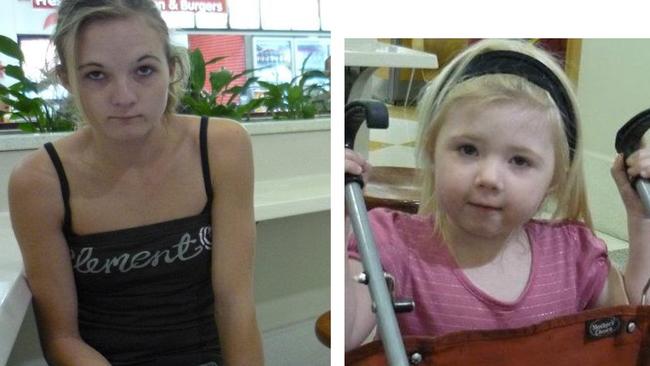Khandalyce Pearce’s death highlights failings of our child protection system
KHANDALYCE Pearce never made it to her first day of kindergarten. But if she had, she might have made it to safety.

Opinion
Don't miss out on the headlines from Opinion. Followed categories will be added to My News.
KHANDALYCE Pearce never made it to her first day of kindergarten. But if she had, she might have made it to safety.
This week, we finally learned the identity of the little girl whose remains were found on a lonely road in country South Australia. She was aged just two when she was so shockingly murdered.
Child protection experts say this is one of the most vulnerable stages in a child’s life — the years between going home from the hospital and entering school. If they aren’t enrolled in childcare or preschool, they can remain off the radar of any institution which could potentially notice something is wrong and intervene.
Police told us that Khandalyce had her 18-month immunisations but disappeared from the system after that. She and her mother Karlie — who was also murdered and buried in the Belanglo state forest NSW — were from Alice Springs but appeared to live an itinerant lifestyle. The burning question since the toddler’s bones were found in a suitcase on a roadside near Wynarka has been: “How could she go missing and no one raise the alarm?”. We now know that her family filed a missing persons report but it was later withdrawn. It comes at a time when our community is grappling with how best to protect our youngsters. The case also highlights many of the failings of our system, but mostly it reveals the need for a more consistent, national approach to child protection.
For example, the investigation into the death of Khandalyce and her mother spans two states and two territories where they lived or passed through. Here in SA, our child protection system is overburdened and not coping with the hundreds of concerns reported daily about potential abuse or neglect.
But figures revealed in The Advertiser this week showed that half of the reports to Families SA’s Child Abuse Report Line are about minor or unnecessary concerns. So it appears we live in a society where there is such heightened awareness about child welfare issues that some people are willing to endure a long wait on the phone to alert authorities about the sun safety of a child.
But Khandalyce’s case shows we also live in a society where a two-year-old can go missing, and be killed, without the alarm being raised. She is one of many children to slip through the cracks. It took about a week for the parents of baby Ebony — who died in 2011, aged four months — to tell Families SA that she was dead. The mother of Chloe Valentine, who died in 2012, aged four, and her then partner waited hours to call an ambulance for the little girl.
The problem is not unique to South Australia.
In Melbourne, a five-year-old boy died in 2012 days after cutting his foot on rubbish in his family’s filthy home, because his parents failed to take him to a doctor.
The boy was reportedly never immunised or enrolled in school or kindergarten.
Children born in homebirths can also fly under the radar of institutions which would otherwise keep an eye on them. The abandonment of a number of babies in NSW prompted the Government there to make changes to better track young children.
The NSW births registry uses technology to find parents who have not registered their babies within 60 days. If it cannot contact the parents, the registry calls in child protection workers.
Ideas like this are being implemented in an ad hoc way across the country, but we should be putting more thought into which initiatives are working best and how we can roll them out nationally. Our state government is, piece by piece, making changes to close the gaps through which children can disappear.
Recently, Premier Jay Weatherill suggested children as young as three should attend preschool so they would be on the government’s radar earlier in life. Mr Weatherill laments that Government agencies provide some early advice for parents but “basically disappear until (children reach) the age of four”. He has a lead role in developing proposals for a national restructure of early childhood education before the next Council of Australian Governments meeting. The SA Government is also considering developing a central database of the health, education and welfare information it holds on children. This is done in Tasmania and is a model which could be replicated.
It would be most helpful if each state kept comparable information. Another of Mr Weatherill’s proposals could help with this. He wants the states to have responsibility for a child’s education and wellbeing from birth to 18, rather than swapping between state and federal authorities as children move through levels of education and care.
There is another model, already working well in SA, which is a good candidate for national expansion. The Multi-Agency Protection Service brings together police, health, education, welfare and housing authorities to monitor high-risk domestic violence cases. Better information collection and sharing is a must if we are to improve protection of children — but developing the mechanisms to enable it is complex and takes time and money.
It’s a big investment that will have to be made in the knowledge that it will take years to see results. There will also be concerns about how far authorities should go. But we cannot argue with the evidence that shows current safeguards are not enough.
We must bring the best of our efforts together, as quickly as possible, to tackle this problem and give our children the best chance at any stage of life.


